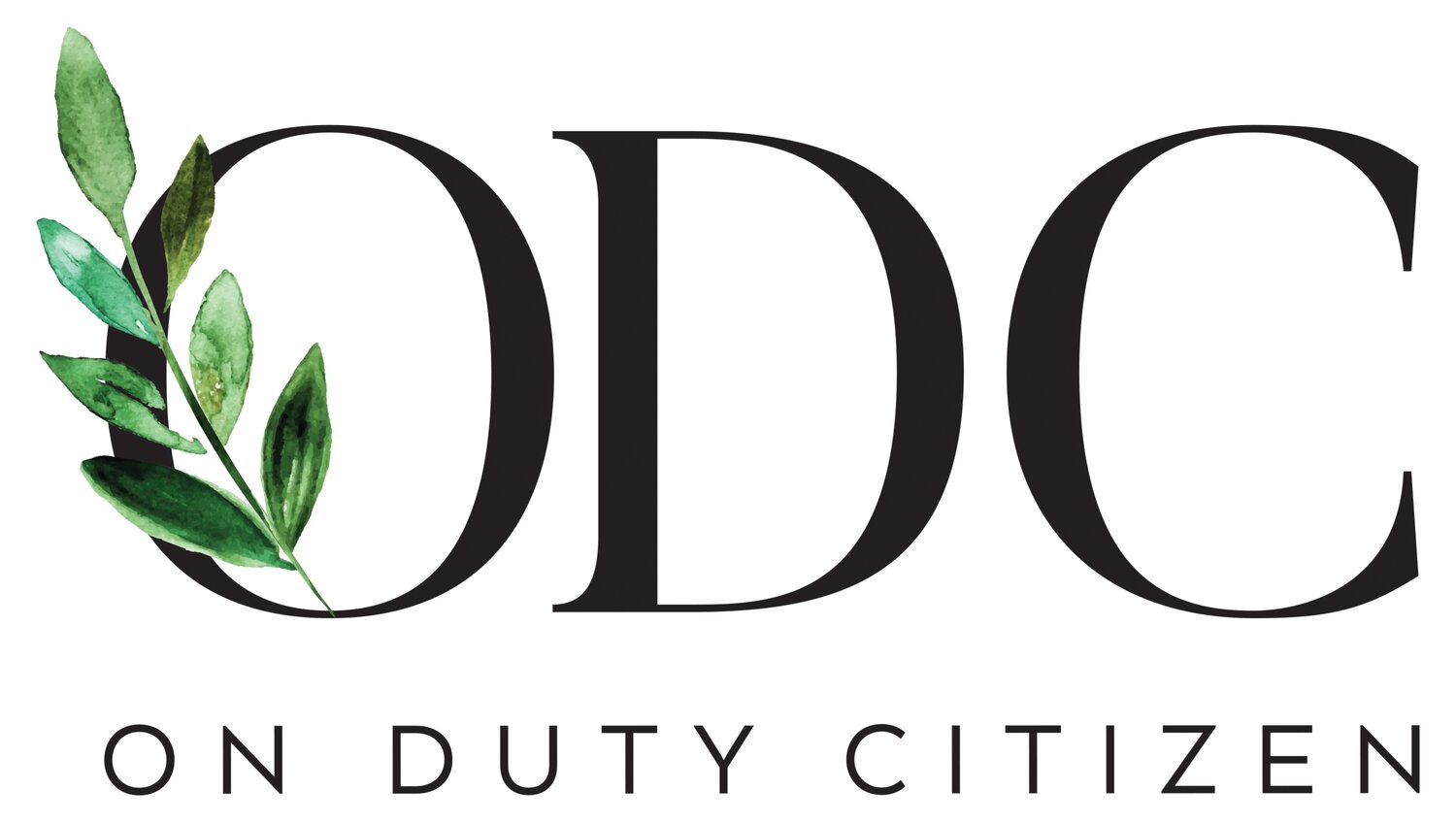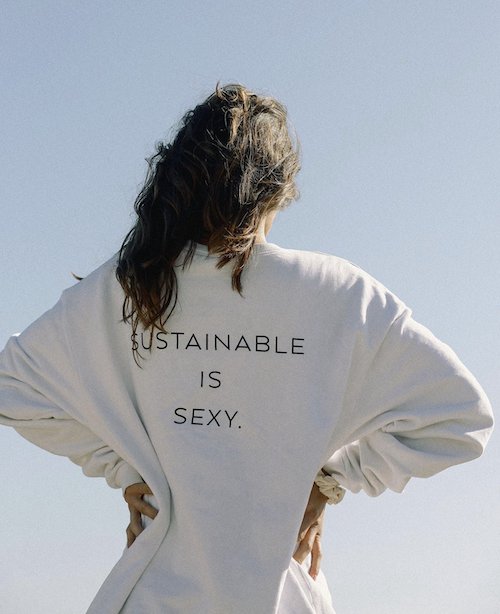ON DUTY CITIZEN
ADITI MAYER
1) What inspired you to get involved in the sustainability movement?
My catalyst to enter the sustainable fashion world was the 2013 Rana Plaza Factory Collapse-- which was an 8-story garment factory that killed over 1,134 people; one of the largest industrial disasters of our time. The day before the collapse, deep cracks had appeared in the eight-story building, but there was so much pressure from upper management to have workers finish orders, facilitating this mass industrial homicide.
So my entry into the world of sustainable fashion was rooted in looking at the industry through a lens of social justice. After the 2012 Rana Plaza Factory collapse, my eyes were opened to the intersection between labor rights and marginalized communities.
I was just about starting college at the time, and concurrently started my blog. At the time, my understanding of sustainable fashion was quite elementary-- I always describe my blog as a platform that grew alongside me and my nuanced understanding of sustainability.
2) How do you fight for representation and intersectionality within the sustainable movement?
As noted by Sourcemap in The Cut, taking a look at fast fashion from a macro perspective reveals that supply chains for most major clothing and apparel manufacturers have the same world trade routes as 150 years ago-- during the height of European colonial exploitation. That’s to say, the fast fashion industry is simply recreating, or continuing, upon exploitative systems.
This is important when we understand how the fashion industry profits off of the (exploited) labor of predominantly Black and Brown communities globally, especially in countries that are still reeling from the impacts of colonization.
The sustainable fashion movement must center BIPOC voices as leading actors-- communities that have been historically sustainable. If we don’t, we will continue to legitimize neo-colonial domination in the power dynamics that frame sustainable fashion.
3) What are some daily habits/tips you have to live a more conscious lifestyle?
As a general rule of thumb, I would say think about prolonging the life of all the items you own. This can be applied to multiple domains: prolonging the life of the clothing we own, re-using items like plastic (that would otherwise be single-use), to looking at food waste not as waste, but as food for composting, etc!
4) Who are some people you look to for inspiration within the sustainable and social justice movements?
So many! I am most inspired by garment workers at the frontlines-- the artisans that are the heart of the fashion industry. I’m particularly inspired by the work and members of the Garment Worker Center (GWC) in Los Angeles, which is a garment worker led organization in the fight for social and economic justice. The GWC addresses the systemic problems of wage theft, unhealthy and unsafe working conditions, and the abusive and inhumane treatment faced by workers on-the-job.
5) What are you most optimistic about in regards to environmentalism?
I am most optimistic about the regenerative agriculture domain as a way to see our place on this Earth that’s not just rooted in lesser impact, but positive impact.
6) Name some of your favorite sustainable and/or ethical brands and why you trust them.
I love Tonle as they have been one of the first vanguard of zero-waste fashion and design. Agaati is a South Asian owned brand that is doing amazing things with the artisan community.
7) What are some of your favorite resources you use to learn more about sustainability?
I respect the work of Celine Semaan’s The Slow Factory, anti-GMO activist Vandana Shiva, and regenerative farmer and educator Farmer Rishi.
8) Who do you think gets to represent the sustainability movement and if there has been misrepresentation, how can we make this movement more inclusive?
I wrote all about this in this piece for Teen Vogue: Sustainable Fashion Has a Diversity Problem. Here's How I’m Helping to Fix It.
"This created simplified dichotomies between the Global North and the Global South. On one hand was the consumer in the Global North, one with the ability to buy into a culture of global moralism. On the other hand was the archetype of women in the Global South, one that needed saving by Western luxury sustainable fashion markets in the Global North. And that’s where the inherent racial and class dynamics of the industry begins....Today, my mission as a sustainable fashion blogger is to reorient who gets to lead this movement. Diversifying the voices of sustainable fashion isn’t just to elicit the cosmetic role of “inclusion,” but also to diversify the modalities through which we understand what sustainability looks like.
Beyond just talking about the plight of garment workers globally, I decided to draw my efforts to support the resistance of garment workers in Los Angeles, a largely undocumented workforce, whose immigration status is often weaponized in order to prevent them from speaking out.
Beyond just sharing the next ethically made must-have of the season, I decided to create content about opting out of a culture that makes you feel like you constantly need to buy more-- and understanding your personal style beyond trends.
And while I still work with luxury sustainable fashion labels, the majority of them are BIPOC- owned, addressing the need to create solutions that understand the context of regional issues and can present aesthetics that honor cultural craft rather than appropriate it.”
9) With regards to inclusivity, what are some of the ways in which you think we can make sustainability more affordable?
For folks that are new to the sustainability fashion scene, I feel like the knee-jerk reaction is to feel like we need to revamp our closets completely to become ethical. The Western narrative around sustainability is largely rooted in consumption, which I believe is quite damaging. Although conscious consumerism is important, the idea of “Voting with your dollar” often fuels problematic notions of not only how one holds power, but who holds power (considering the inherent class and racial dynamics of the industry).
The biggest thing is consuming less, after all.
10) Could you tell us about a challenge or obstacle you faced with regards to sustainability and/or social justice? How did you overcome it?
As noted earlier in the interview, a constant fight is bringing equitable representation and voice to the BIPOC leaders of sustainability. In terms of overcoming, it is always a work in progress, but it is ultimately driven by the work of bringing community and allies together to address the problem and thinking of holistic ways of expanding the modalities of sustainability.




